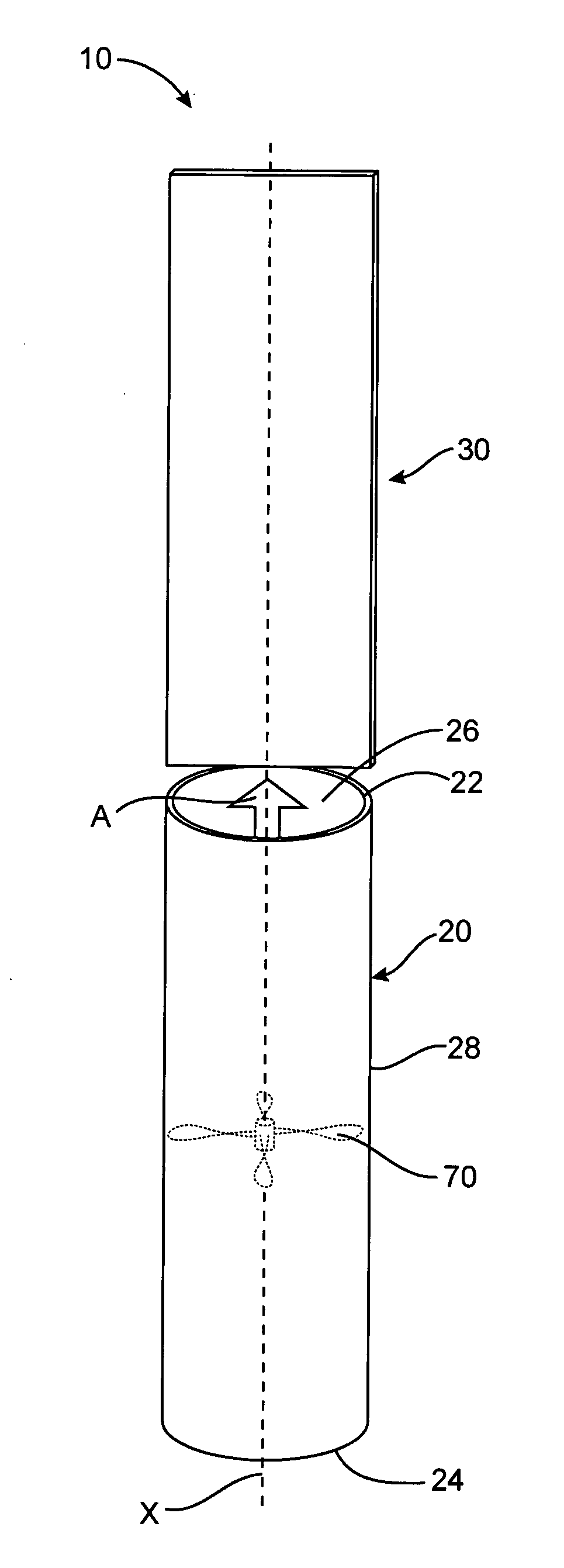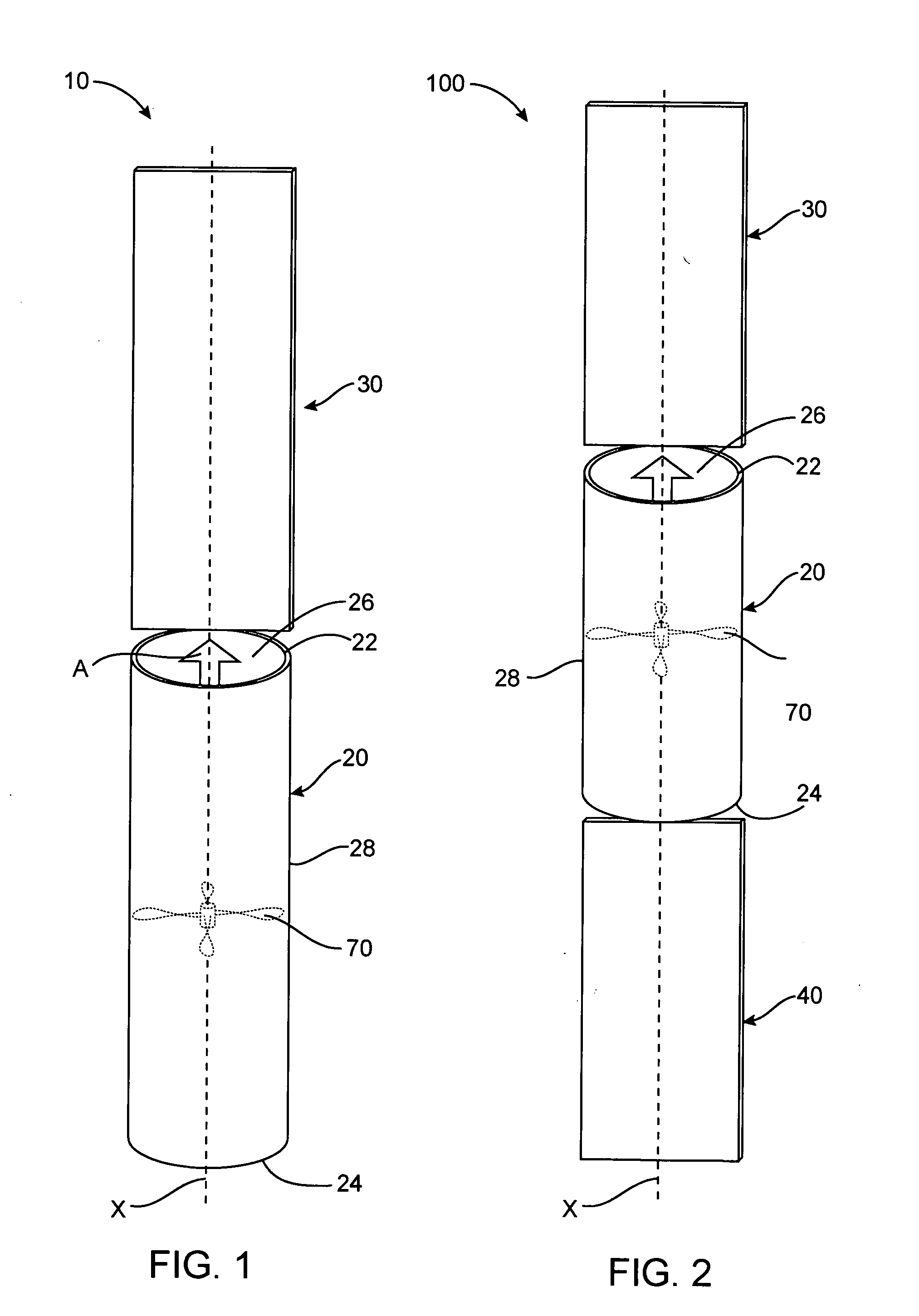System and method for converting wind into mechanical energy for a building and the like
a technology of mechanical energy and airflow, applied in the direction of fluid couplings, renewable energy generation, greenhouse gas reduction, etc., can solve the problems of material fatigue and catastrophic failure, many technical, environmental, noise and aesthetic problems, and raise safety concerns, so as to improve structural strength and improve efficiency.
- Summary
- Abstract
- Description
- Claims
- Application Information
AI Technical Summary
Benefits of technology
Problems solved by technology
Method used
Image
Examples
Embodiment Construction
[0053] This invention provides a system for converting an airflow into mechanical energy with non-moving wind contacting parts and which provides improved efficiency with a stronger, simpler construction.
[0054]FIG. 1 shows a drawtube 10 for converting an airflow into mechanical energy having a tubular member 20, a substantially planar leading edge member 30, and an energy conversion device 70. The wind in FIG. 1 is assumed to be coming out of the page. The energy conversion device 70 may be positioned within the tubular member 20 as shown in FIG. 1 or connected to the drawtube 10 by an air plenum. The tubular member 20 has a first opening 22 and a second opening 24 formed in two planes substantially perpendicular to a longitudinal axis X of the tubular member. The substantially planar leading edge member 30 is positioned in front of or on the windward side of the first opening 22. The leading edge member 30 in the embodiment of FIG. 1 is in a plane, which is substantially parallel ...
PUM
 Login to View More
Login to View More Abstract
Description
Claims
Application Information
 Login to View More
Login to View More - R&D
- Intellectual Property
- Life Sciences
- Materials
- Tech Scout
- Unparalleled Data Quality
- Higher Quality Content
- 60% Fewer Hallucinations
Browse by: Latest US Patents, China's latest patents, Technical Efficacy Thesaurus, Application Domain, Technology Topic, Popular Technical Reports.
© 2025 PatSnap. All rights reserved.Legal|Privacy policy|Modern Slavery Act Transparency Statement|Sitemap|About US| Contact US: help@patsnap.com



